As I said in my previous post on the Golden Circle, last time we had to temporarily leave the national Park of Þingvellir out of our tour because the weather was awful. I think in the end we were wise to do so, as we found out Þingvellir requires some time to be truly appreciated, as the territory is so vast and the nature is so outstanding and permeated by historical value. It’s not a surprise that each year thousand of visitors stop at Þingvellir to appreciate its beauty.
When we reached the national park there were lots of tourists around, which was quite disappointing. Thankfully those tourists never got very far away from their bus, so there were plenty of spots were they were nowhere to be seen. The very thing that surprised me was those tourists were not actually “visiting” the location. They were getting off the bus for ten minutes or little more, taking a few shots of the closest view, then they got on the bus again and disappeared. Ten minutes is not much more than the time it takes a person to get off a bus to pee. Not only in that time they managed to pee, but also they savored the wild nature and bought postcards. Either I am a retard or tourists deserve the bad fame that accompanies them everywhere. Bad fame, of course. Because people seem to turn the “idiot mode” on when they turn into tourists. How could you otherwise describe that kind of brainless “hit and run” attitude that doesn’t even allow the visitor to get into the mood of the location visited? To average tourists it doesn’t really matter to form an idea of what they are seeing. All that counts is to be able to tell people at home “been there, done that” with abominable pictures to testify it. Tour operators, sadly, seem in the name of profit to always be eager to support this attitude, which in many cases results very annoying for other more sensible visitors, willing to truly enjoy what they are experiencing but ultimately forced to struggle against barbaric hordes of mindless devastating zombies hopping on and off buses.
Alright. Enough with complaints. Let’s get back to the National Park.
Located in the Bláskógabyggð municipality, in the district of Arnessysla, just 45 kilometers away from the capital, the Þingvellir (in Icelandic the valley of the meeting) National Park was founded in 1930. It’s been declared by UNESCO World Heritage Site since 2004 for its natural and historical relevance. In fact, both from a natural and from an historical point of view, Þingvellir is a truly unique location.
From a natural point of view, Þingvellir’s importance is definitely incomparable as it’s the only place in the world where it’s possible to admire the surfacing of the rift that separates the Eurasian and the North American continents. Abysmal cracks and majestic valleys form impressive canyons, where walls of irregular rocks seem to touch the sky and obscure crevices seem to lead to the center of the Earth. Earthquakes are frequent in the region – the continents drifting away a few centimeters every year – and as a matter of fact the geology of the area had also the power over time to influence its history. Apart from the awe-inspiring geology, Þingvellir is also characterized by the amazing scenery. The beautiful clear reflections coming from the mirroring waters of lake Þingvallavatn, the largest natural lake basin of Iceland, and the constant discreet murmur of the small waterfall of Öxaráfoss contribute to the charm of the picture. The park is also rich in vegetation and more than eighty different species of birds contribute to the variety of the animal population.
But the role of Þingvellir for Iceland’s history is not less important than its natural relevance. In the area of the National Park in 930 the first Alþingi (literally the General Assembly), one of the first recognized national parliaments in the world, was established. The Alþingi served at the same time as a parliament and as a supreme court. Meetings were held once each year and people coming from all parts of the country used to gather in the Þingvellir’s area, settling there for a two-week period with their establishments and activities, giving life to a very lively centre that comprised, among the others, artisans and traders of all kinds, not to mention beggars and people in search of opportunities. It is thought that several Icelandic sagas took their inspiration from the social life and activities taking place at Þingvellir during the periods of the assembly. With the end of the Icelandic Commonwealth in 1271, the authority passed at first in the hands of the King of Norway and later in the hands of Danish rulers; at this point the Alþingi, despite the meetings continued to take place until 1799, had lost its powers, which were restored only in 1844, when the location of the parliament was moved to Reykjavík probably also due to natural reasons, like the frequency in the area of violent earthquakes and floods which had caused the place of the Assembly to be moved from time to time around the area even before its final relocation. A few scattered ruins marking the human presence in the territory in old times are still visible. It’s been reported the first Thingvallakirkja was built in Þingvellir around the year 1015, shortly after the acceptance of Christianity by Iceland. The legistative section of the Alþingi (the Lögrétta) also used to gather inside the church. The present church though only dates back to 1859, since the original structure was destroyed. Next to the church a small and intimate graveyard hosts, among the others, two famous Icelandic poets, Jónas Hallgrímsson and Eiar Benediktsson. The pastor of the Thingvallakirkja is also traditionally warden of the national park. To this day cultural events and meetings are still being held at Þingvellir, which also hosts the summer residence of Iceland’s Prime Minister.
Þingvellir is indeed an incredible place. It’s so vast and the scenery is so beautiful. Unfortunately, I lack the writing skills to describe it. We spent there several hours, but after those hours we still could find so much to do and see. We were graced by a wonderful weather, one of the warmest days of this late summer. Unfortunately we – Harry, Jason and I – are probably quite the sissies and we didn’t have the right shoes either, so we got tired after all the walking around, climbing steep steps and arduous paths. The dog Kátur, despite all his hyperactivity and his splashing – but maybe I shouldn’t be saying it – in the waters of the lake – which charmed quite a few tourists equipped with unstoppable cameras – was dead tired as well. I hope we will be excused if I say we wanted to stay more but we didn’t.
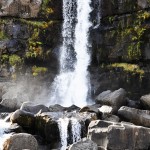
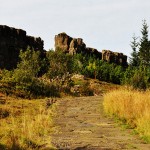
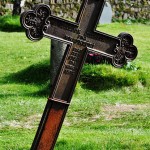

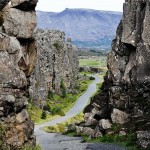
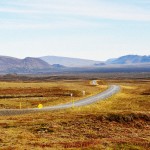
Nice write up about Þingvellir National Park.